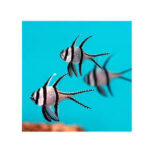Dragons have captivated human imagination for centuries, appearing in myths, legends, and folklore across the world. In Chinese culture, the dragon (lóng, 龙) is a revered symbol of wisdom, strength, and cosmic balance. Unlike the fire-breathing, menacing dragons of Western folklore, the Chinese dragon is often depicted as a benevolent and divine force, bringing prosperity and good fortune.
However, China is not the only culture that celebrates dragons. Many civilizations—from Europe to the Americas, from India to the Middle East—have their own interpretations of this legendary creature. Despite regional differences, dragons share common symbolic meanings across cultures, and interactions between these traditions have influenced art, literature, and belief systems over time.
This article explores the intersection of Chinese dragon mythology with other cultures, highlighting similarities, differences, and the ways in which dragon lore has evolved through cultural exchange.
The Unique Identity of the Chinese Dragon
Before comparing dragons across cultures, it is essential to understand what makes the Chinese dragon distinct.
1. Physical Appearance and Attributes
Chinese dragons are often portrayed as long, serpentine creatures with deer antlers, fish scales, and eagle claws. They lack wings but can fly effortlessly, symbolizing their divine nature. Unlike Western dragons, which are often depicted as solitary beasts, Chinese dragons are associated with celestial realms, oceans, and rivers.
2. Symbolism and Meaning
In Chinese culture, dragons represent:
- Wisdom and Intelligence – Dragons are seen as wise beings capable of guiding emperors and scholars.
- Power and Authority – The dragon was an imperial symbol, used exclusively by the emperor in ancient times.
- Prosperity and Good Fortune – Many believe that dragons bring wealth, rain, and a bountiful harvest.
- Balance and Harmony – As creatures that control water and the elements, dragons maintain cosmic order.
These positive attributes contrast sharply with the way dragons are perceived in many Western traditions, where they are often seen as malevolent creatures to be slain by heroes.
Dragons in Western Mythology: The Contrast with Chinese Beliefs
1. European Dragons: Fire and Destruction
Western dragons, particularly those in European mythology, are often depicted as fearsome beasts with bat-like wings, sharp claws, and the ability to breathe fire. Unlike the Chinese dragon, which symbolizes benevolence, European dragons are commonly portrayed as hoarders of treasure and antagonists in heroic tales.
- In Greek and Roman Mythology, dragons often serve as guardians of sacred places or treasures. The Ladon dragon, for instance, guarded the golden apples of the Hesperides.
- In Norse Mythology, dragons like Fafnir represent greed and destruction. Fafnir was originally a dwarf who transformed into a dragon due to his obsession with gold.
- In Medieval Europe, dragons became symbols of chaos and evil, often defeated by legendary knights such as Saint George, who famously slayed a dragon to rescue a princess.
Despite their differences, both European and Chinese dragons share themes of immense power, supernatural origins, and their connection to natural forces.
2. The Influence of Chinese Dragons on Western Perceptions
During the Silk Road trade and later maritime exchanges, Chinese culture—including its dragon mythology—spread to the West. Some European texts from the Middle Ages describe long, serpentine dragons similar to Chinese ones, indicating possible cross-cultural influences. Additionally, with globalization and modern fantasy literature, positive depictions of dragons—similar to the wise and noble Chinese dragons—have emerged in Western media, such as in J.R.R. Tolkien’s The Hobbit or in the Game of Thrones series.
Dragons in Indian and Southeast Asian Traditions
1. Nāgas: The Serpentine Deities of India and Southeast Asia
In Indian mythology, dragons are closely related to Nāgas, serpent-like deities who are both revered and feared. Nāgas are often depicted as divine beings that reside in rivers, lakes, and underground realms.
- Hinduism and Buddhism: Nāgas are guardians of wisdom and cosmic order. They often appear in Buddhist texts, protecting sacred scriptures and Buddhist relics.
- Southeast Asian Mythology: In Thai, Cambodian, and Laotian traditions, Nāgas are believed to bring rain and fertility, much like Chinese dragons. The Mekong River is even thought to be home to a great Nāga.
The similarities between Nāgas and Chinese dragons suggest a shared cultural influence between India, China, and Southeast Asia, possibly through trade and religious exchanges.
2. The Connection Between Nāgas and Chinese Dragons
Both Nāgas and Chinese dragons are linked to water, protection, and wisdom. Their association with rain and fertility indicates an ancient belief that serpent-like beings control natural elements. This belief likely spread between China and India along trade routes, influencing the depictions of dragons in both cultures.
Dragons in Middle Eastern and Mesopotamian Cultures
1. Mesopotamian Dragons: Chaos and Creation
The earliest recorded dragon-like creatures appear in Mesopotamian mythology.
- Tiamat, a primordial goddess in Babylonian mythology, is often depicted as a massive sea serpent or dragon. She represents chaos and is slain by Marduk, who then creates the world from her body.
- The Mušḫuššu (Serpent-Dragon), found in Babylonian art, resembles Chinese dragons in its elongated body and divine status. It was often associated with the god Marduk and symbolized protection.
These ancient myths likely influenced dragon stories in both the East and the West, as Mesopotamian culture had far-reaching effects on later civilizations.
2. Persian and Arabian Dragons: Guardians and Adversaries
- In Persian Mythology, dragons (azhdaha) often serve as obstacles for heroes. However, they are not purely evil and sometimes possess wisdom.
- In Arabian Folklore, dragons are powerful creatures that test a hero’s strength and courage, similar to European dragon-slaying tales.
The Middle Eastern connection with China through the Silk Road suggests that some dragon imagery, especially that of protective dragons, may have influenced Chinese and Persian art over time.
Dragons in Mesoamerican Cultures
Across the world, dragons or dragon-like beings appear in the mythologies of the Americas.
- The Aztec God Quetzalcoatl, the Feathered Serpent, shares many characteristics with Chinese dragons. He is associated with wisdom, wind, and rain—much like the celestial dragons of China.
- The Mayans also had Serpent Deities, believed to control cosmic forces and bring knowledge to humanity.
Although geographically distant, the similarities between Mesoamerican feathered serpents and Chinese dragons suggest a universal archetype of a wise, powerful, and benevolent serpent deity.
The Modern Influence of Chinese Dragons on Global Culture
In contemporary times, Chinese dragons have influenced global pop culture, art, and philosophy.
- Chinese New Year Dragon Dances are now performed worldwide, symbolizing prosperity and unity.
- Movies and Literature, such as Avatar: The Last Airbender, Shang-Chi, and Studio Ghibli’s Spirited Away, incorporate elements of Chinese dragon mythology.
- Martial Arts and Philosophy: The dragon remains a key symbol in kung fu, meditation, and Chinese martial arts philosophy.
As globalization continues, Chinese dragon lore blends with other traditions, creating new interpretations and strengthening its presence in modern storytelling.
Conclusion
The Chinese dragon, with its wisdom, power, and cosmic significance, stands apart from many other dragon traditions, yet shares common themes with cultures worldwide. From the fire-breathing dragons of Europe to the sacred Nāgas of India and the feathered serpents of the Americas, dragon mythology is a universal phenomenon that reflects humanity’s deep-rooted fascination with these legendary creatures.
Through cultural exchange, trade, and storytelling, Chinese dragons have influenced and been influenced by other civilizations, proving that the spirit of the dragon transcends borders, uniting cultures through mythology and shared beliefs.










